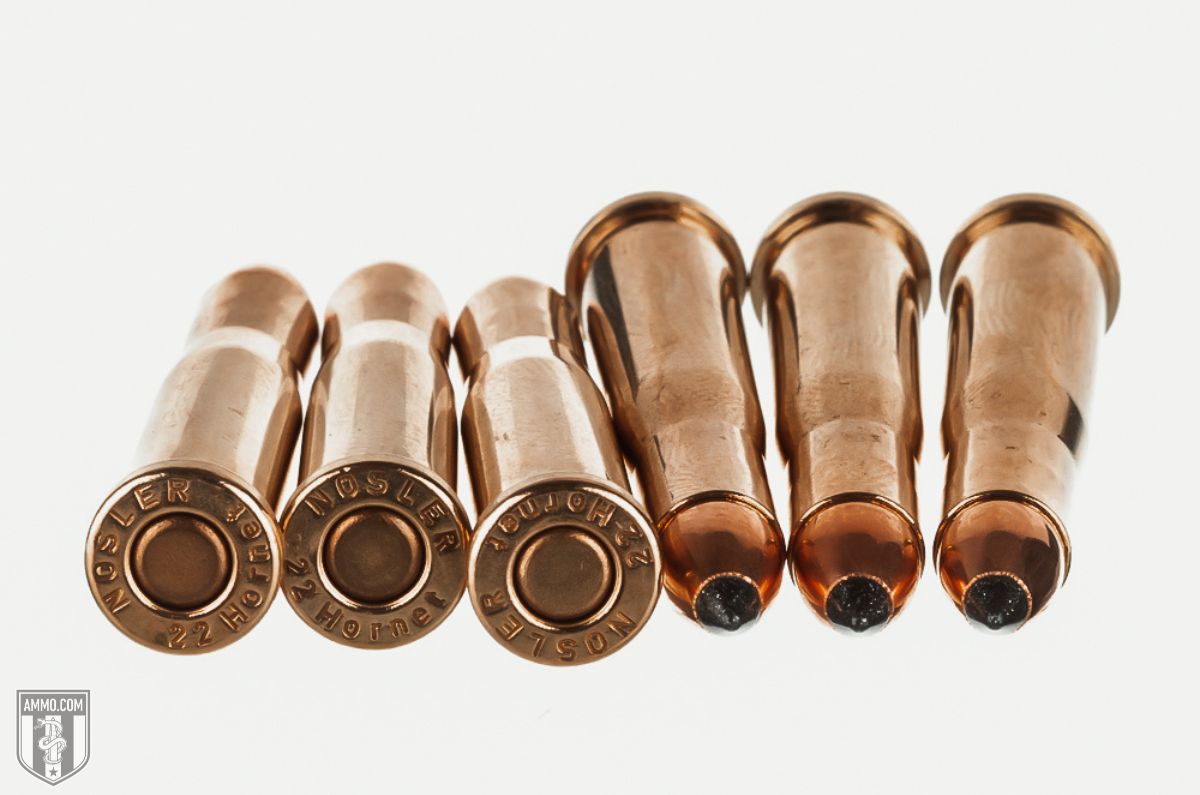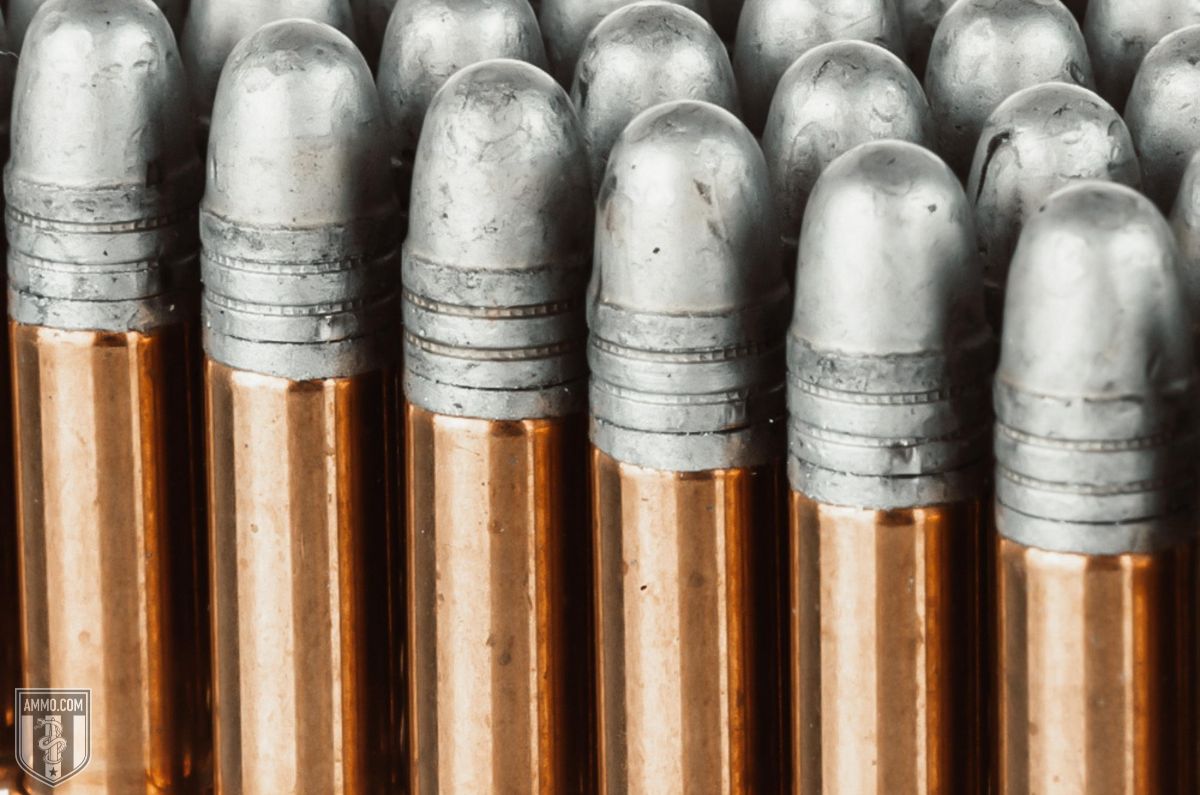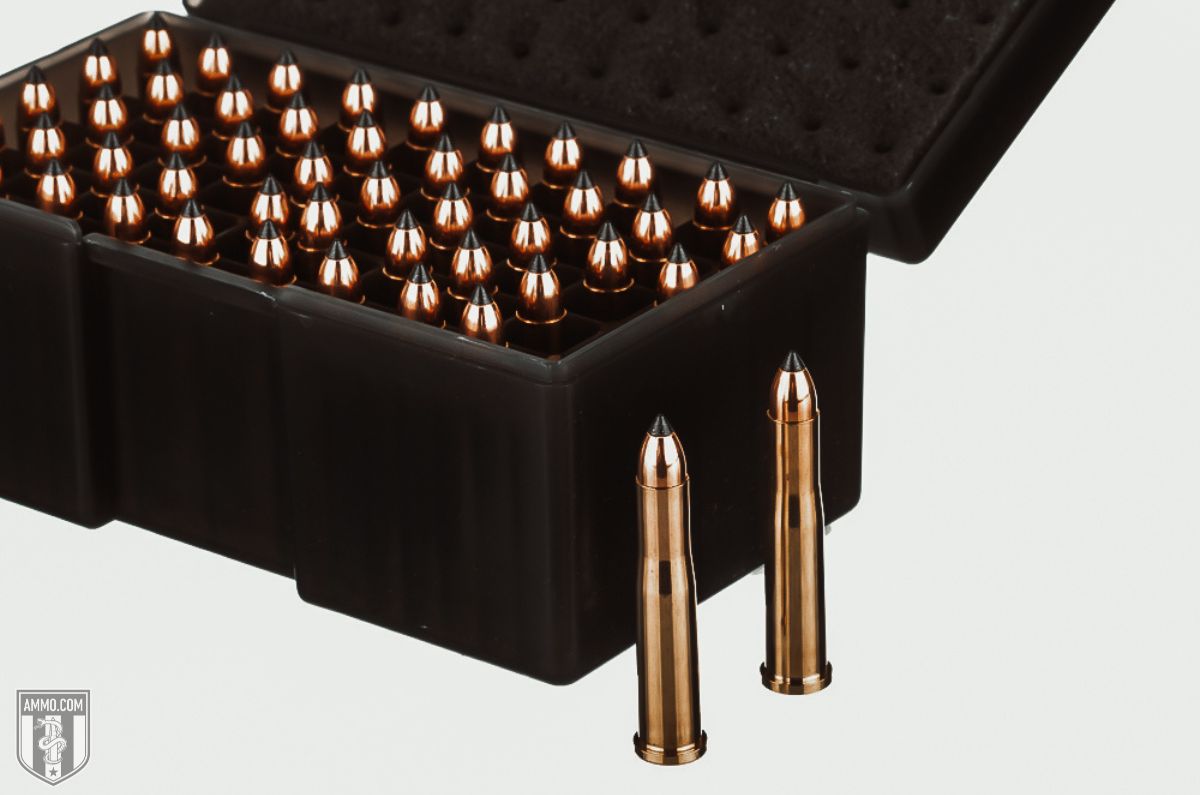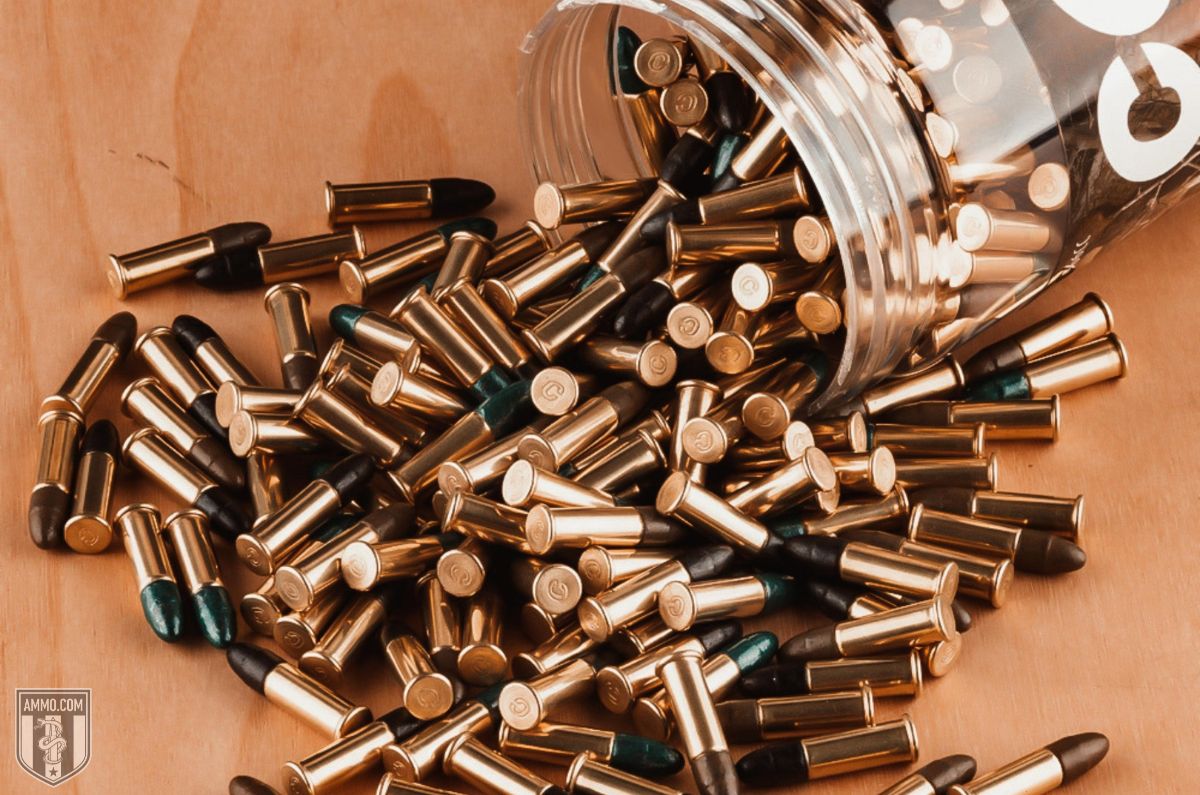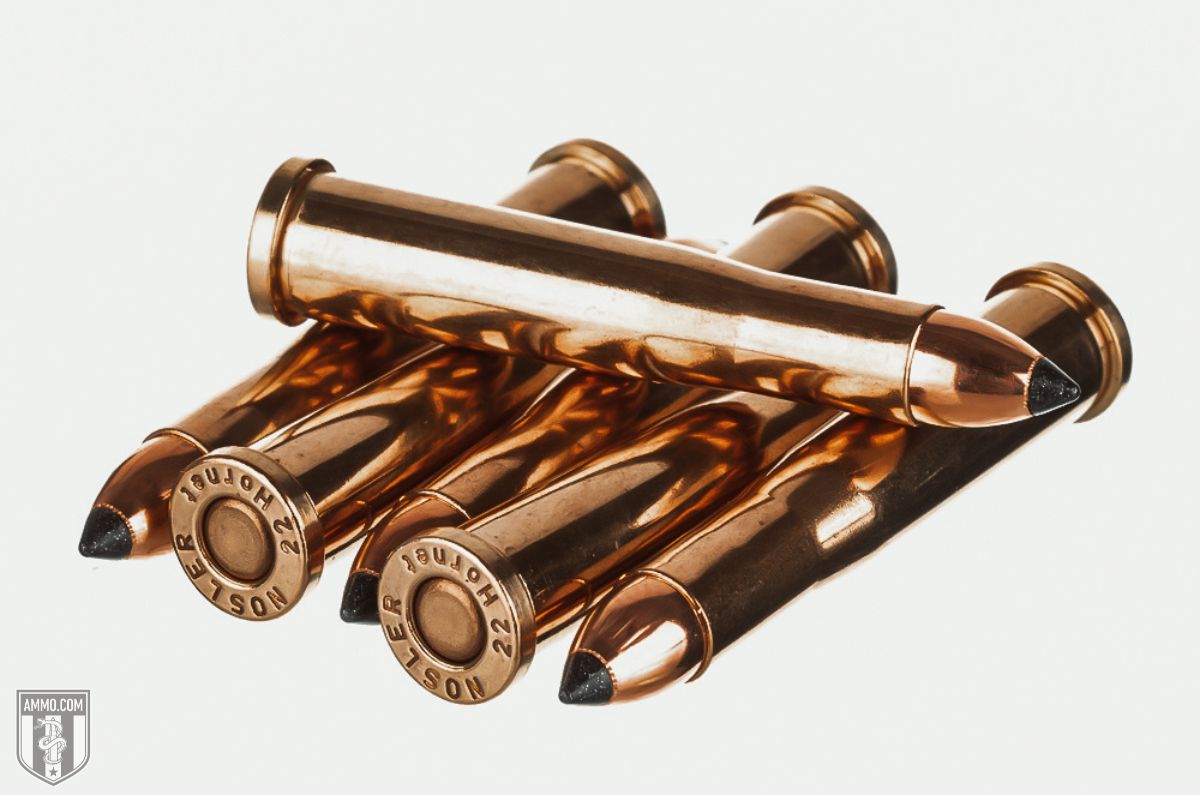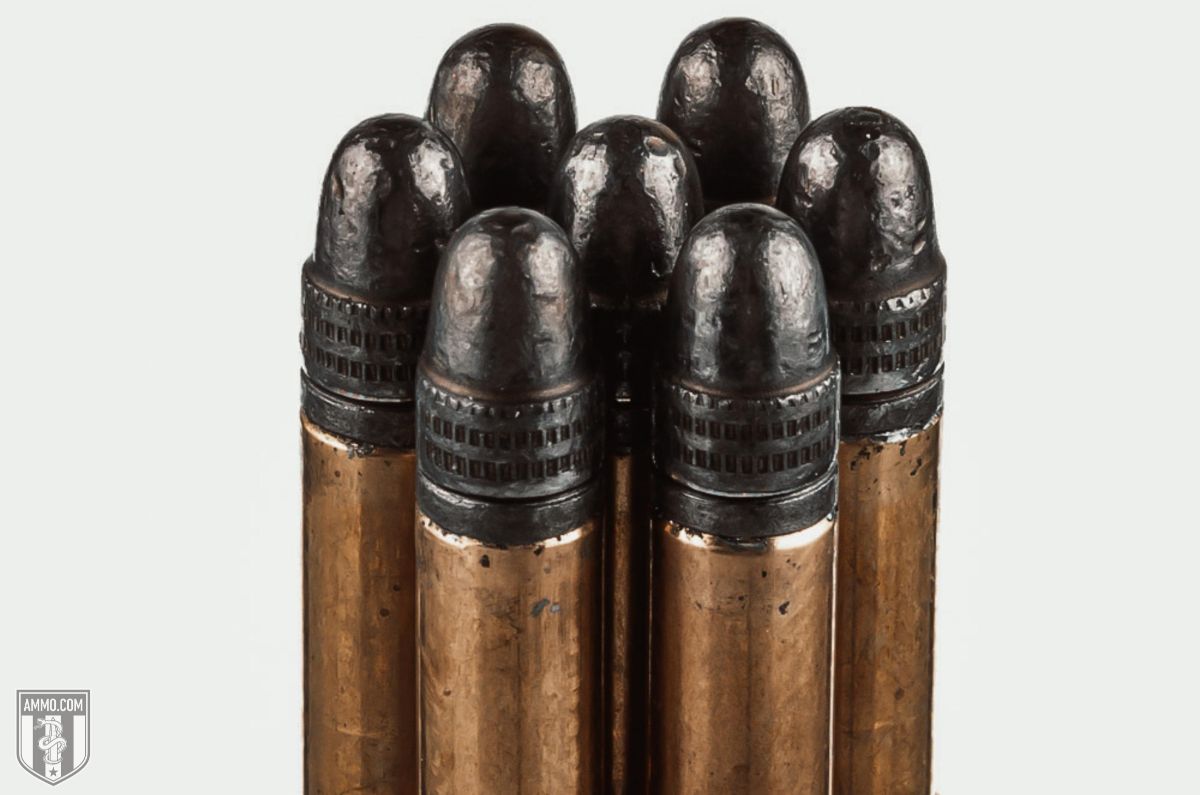22 Hornet vs 22LR: Similar Diameter Bullet, Very Different Results
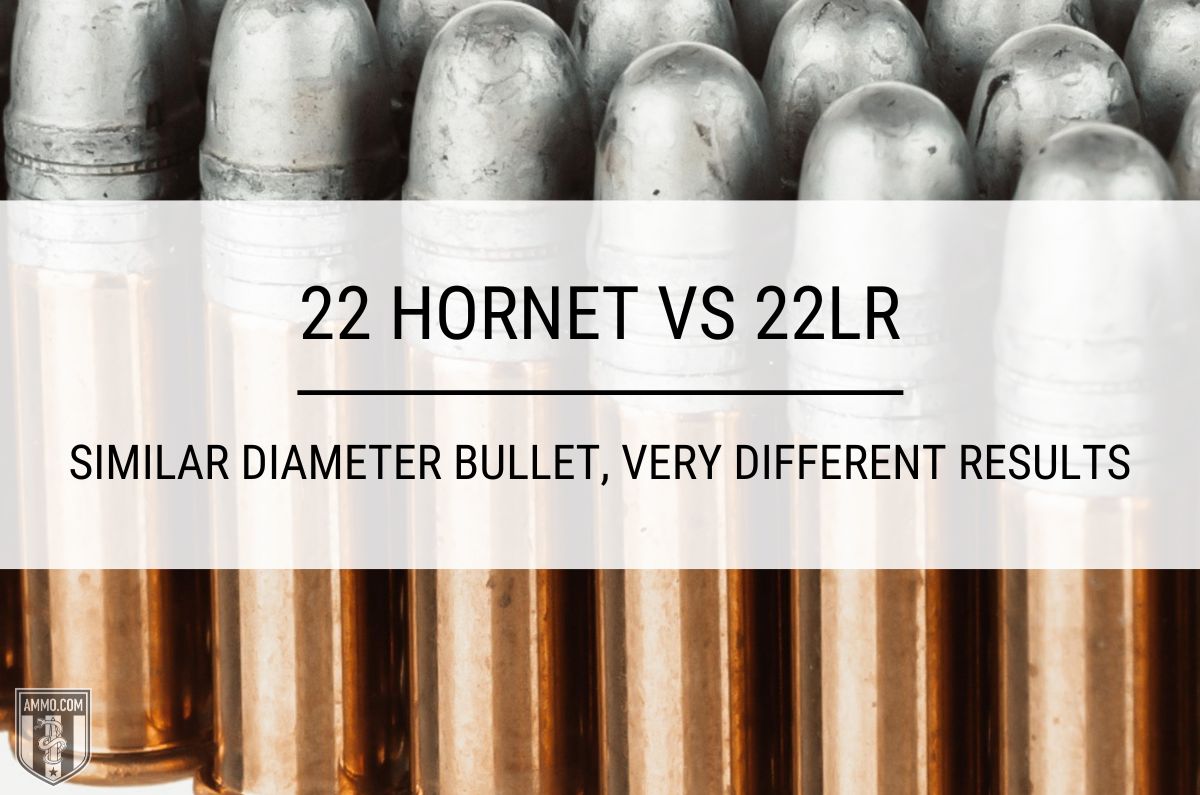
The 22 Hornet vs 22LR is a rivalry between two calibers that were once considered a favorite of many shooting enthusiasts.
Both are primarily overlooked because of their lack of ballistics and stopping power.
However, they shouldn't be disregarded entirely as calibers that only have nostalgic value.
22 Hornet vs 22LR
The 22 Hornet was once the go-to caliber for coyote hunters, while the 22 LR was the next step for most young shooters wanting to upgrade from a BB gun.
The 22 Long Rifle cartridge has hung onto its reputation as an excellent beginner round, but most consider it underpowered for anything other than target practice and plinking.
The 22 Hornet load is more powerful than the 22 LR, 22 Winchester Magnum Rimfire (22WMR), and 17 HMR.
However, its ballistics don't hold up against other comparable rounds like the 22-250 or 223 Rem, which is why it's largely been forgotten by most varmint hunters.
Yet, how do these classics stack up against each other?
Let's find out!
Cartridge Specs
The two cartridges have noticeable differences that contribute to their ballistic performance.
When considering which caliber to purchase, it's essential to consider the specifications of the caliber, as these will help to determine the best uses for the rounds.
The 22 Hornet doesn't have a parent case, although most consider it based on the 22 Winchester Centerfire (WCF), a black powder cartridge, or the 22 Harwood Hornet.
The 22 LR's parent case is the .22 Long.
As you can guess, the bullet diameter of both rounds is similar. The 22 Hornet has a bullet diameter of .224 in, while the 22 LR is slightly larger at .2255 inches.

The 22 Hornet's case towers over the 22 LR; the case lengths are 1.403" and 0.613", respectively.
The longer case length means the overall size of the 22 Hornet is much larger than the 22 LR. The shorter 22 LR is 1" overall, while the 22 Hornet has an overall length of 1.723".
The larger case means the 22 Hornet has more case capacity than the 22 LR and substantially more pressure.
The maximum pressure (SAAMI) for the Hornet is 43,000 psi, while the max pressure for the 22 LR is only 24,000 psi.
The difference in pressure translates to recoil, which we will discuss next.
Recoil: 22 LR vs 22 Hornet
We should consider recoil when purchasing a new rifle, as a round with heavy recoil will be more challenging to control and will make your follow-up shots slower.
Muzzle velocity (FPS), powder charge, bullet weight, and rifle weight all contribute to the amount of recoil the shooter feels.
The 22 Hornet is beloved by many because of its low 1.6 ft-lbs of free recoil. The 22 LR has it beat, though, coming in under 1lb of felt recoil. It generally has 0.19 foot-pounds of recoil.
The 22 LR is the clear winner of this section. However, the recoil is so low on both rounds it shouldn't be the primary reason for purchasing one caliber over the other.
Trajectory
The trajectory of a bullet is the path it takes to the target. This path is typically an arch due to gravity.
Most experienced shooters prefer a flat shooting round because it improves accuracy.
Neither of these rounds was intended for long-distance shooting competitions, but the 22 Hornet has a clear advantage when shooting distances over 100 yards.
Comparing the trajectory of each round is a little tricky because of the lack of identical bullet weights and maximum effective ranges.
Most firearms enthusiasts zero the 22 LR for 50 yards to make it accessible to inexperienced shooters.
When zeroed in at 50 yards, the 22 LR CCI Mini-Mag plated round nose 40-grain bullet drops 6" at 100 yds.
The 22 Hornet is more powerful and is more commonly zeroed in at 100 yds. At 200 yards, the 22 Hornet 35-grain V-Max experiences 5.6" of bullet drop.
The 35 gr V-MAX Hornet goes subsonic at 300 yards and stays above the speed of sound until around 450 yards with the soft point 45gr bullet.
The more powerful 22 Hornet has a flatter trajectory; therefore, it wins this section.
Accuracy: 22 Hornet vs 22 LR
The accuracy of a round is determined by many factors, including but not limited to the shooter, gun, bullet trajectory, and recoil.
Out to 50 yds, the accuracy of each round will be similar.
Once we pass 50 yards, the 22 Hornet becomes more accurate because of its flatter trajectory.
If you're looking for an accurate round out to 200-250 yards, the 22 Hornet is the best option.
Ballistic Coefficient & Sectional Density
A bullet's ballistic coefficient (BC) is how aerodynamic the bullet is and how well it resists wind drift.
A bullet's sectional density (SD) is a numerical representation of its ability to penetrate based on its dimensions, design, and weight.
The 22 Hornet has a ballistic coefficient of 0.109 and 0.202 for the 35 gr and 45 gr bullets, respectively.
The sectional density of the 22 Hornet will be right around 0.100.
The 22 Long Rifle will generally have a lower BC and SD than the 22 Hornet because it fires lighter bullets at slower speeds.
The Hornet round wins this category.
Stopping Power: .22 Hornet vs .22LR
While many shooters argue stopping power is overrated, I disagree to a point.
Stopping power doesn't matter for a well-placed shot. It's crucial for a less-than-ideal shot, though.
Since both calibers are small, they lack the stopping power to make an ethical kill on most game animals.
However, the 22 Hornet has more stopping power than the 22 LR because of its increased velocity of bullets of similar weights.
Hunting
Growing up, I went small game hunting with a 22 LR because it is an excellent round for small game like squirrels, rabbits, and raccoons.
However, it lacks the power to hunt anything much larger than a raccoon at any distance further than 100 yds.
The 22 Hornet was a staple for coyote hunters in the early 1930s. A good marksman was able to take a coyote out to 200 yards with iron sights.
Though the 22 Hornet is more powerful than the 22 Long Rifle, it does not have the necessary stopping power to harvest deer ethically.
With the capacity to hunt coyotes, groundhogs, and prairie dogs, the 22 Hornet takes this round.
Self-Defense: 22LR vs 22 Hornet
I took my concealed carry test with a 22 LR pistol, though I wouldn't recommend carrying one for self-defense.
Yes, 22 LR pistols have a higher magazine capacity, but they lack the stopping power needed to stop a threat as quickly as possible.
Instead, I carry a 9mm or 45 ACP. They have a lower mag capacity but are much more likely to take out a threat with fewer rounds fired.
The 22 Hornet is not a good weapon for self-defense because it was designed for single-shot rifles.
Though neither of these rounds is my first choice for self-defense, I would carry a 22 LR before I carried a 22 Hornet because pistols chambered in 22 LR are easy to find, and you can carry a semi-auto firearm.
The 22 Long Rifle wins this section.
Home Defense
My home defense argument will be the same as my self-defense argument, except I prefer to have a shotgun handy to lessen the chances of overpenetration.
I prefer to use a 20 ga or 12 ga with buckshot for home defense purposes because shotguns are a more effective firearm in close quarters, and they're less likely to go through multiple walls, so your family and neighbors are safer from friendly fire.
If the only two options I had were a 22 Hornet or a 22 LR for home defense, I'm grabbing the 22 LR for the same reasons I would for self-defense.
The 22 Long Rifle wins this round.
Ammo Cost & Availability: .22LR vs .22 Hornet
In recent years, it was nearly impossible to find 22 LR ammo; manufacturers are catching up with demand, and it's become more readily available.
The prices are much higher than they were 20+ years ago, but for plinking purposes, the 22 LR is still the ammo to purchase, considering one round will only cost you $0.13-$0.25 depending on the quality of the factory ammo you buy.
All major manufacturers make 22 Long Rifle ammo, such as Hornady, Remington, CCI, Winchester, Browning, Aguila, and Federal.
22 Hornet ammo is much more expensive, despite many of the same manufacturers producing the ammo.
A single round of 22 Hornet will cost you $1.25-$5.00, depending on which brand you purchase.
Buying bulk 22 LR ammo will help you save even more money.
The 22 LR is the clear winner here, with the availability of much cheaper ammo.
Firearm Cost & Availability
While 22 Hornet handguns exist, they're expensive and rare. 22 Hornet rifles are easier to find and less costly.
Firearm brands such as Ruger, Savage, CZ, and Winchester all manufacture rifles chambered in 22 Hornet. You can expect prices to be well above $500 for new rifles and at least $1,200+ for collectible models.
Firearms chambered in 22 Long Rifle is a different story. You can find pistols and rifles relatively inexpensive, depending on the brand. A bolt-action rifle tends to be cheaper than a semi-auto but neither costs as much as a 22 Hornet rifle.
A new Winchester Wildcat and Henry Survival Rifle are well below $500. Unless you're buying a highly sought-after collectible 22LR gun, it's doubtful you'll spend over $1,000.
The 22 LR also takes this section.
Reloading: .22 Hornet vs .22 LR
Reloading is another way to save money on factory ammo, giving you control over the controllable variables.
However, 22 LR brass cannot be reloaded because it is a rimfire cartridge. You can handload 22 LR by purchasing new brass and all the other needed materials.
Handloading the 22 Hornet makes more sense because it's a more expensive centerfire cartridge.
By reloading 22 Hornet vs 22 LR, you'll save more money because the price per round is more for the 22 Hornet.
Even though both cartridges can be hand-loaded, the 22 Hornet wins this section because you can also reload it, and it's worth your time to reload.
22LR vs 22 Hornet Ballistics
Our team here at Ammo.com has spent countless hours scouring the Internet to bring you highly comprehensive ballistics tables for both calibers. Below are tables that compare bullet weight to muzzle velocity, kinetic energy, and trajectory for the 22 Hornet vs 22 LR.
Note: This information comes from the manufacturer and is for informational purposes only. The actual ballistics obtained with your firearm can vary considerably from the advertised ballistics. Also, ballistics can vary from lot to lot with the same brand and type load.
22 LR Ballistics
Note: This information comes from the manufacturer and is for informational purposes only. The actual ballistics obtained with your firearm can vary considerably from the advertised ballistics. Also, ballistics can vary from lot to lot with the same brand and type load.
| 22 Long Rifle (LR) Bullet WEIGHT | Muzzle VELOCITY (fps) 22-1/2" Bbl. | Muzzle ENERGY (ft. lbs.) 22-1/2" Bbl. | Mid-Range TRAJECTORY (in.) | Muzzle Velocity | ||
|---|---|---|---|---|---|---|
| Muzzle | 100 yds. | Muzzle | 100 yds. | 100 yds. | 6" Bbl. | |
| 30 Grain Lead Free | 1650 | n/a | 181 | n/a | n/a | n/a |
| 30 Grain Hyper Vel | 1750 | 1191 | 204 | 93 | n/a | n/a |
| 31 Grain Shot #12 | 950 | n/a | n/a | n/a | n/a | n/a |
| 32 Grain Hyper HP | 1500 | 1075 | 165 | 85 | 2.8 | n/a |
| 32 Grain Expediter | 1640 | n/a | 191 | n/a | n/a | n/a |
| 32 Grain Stinger HP | 1640 | 1132 | 191 | 91 | 2.6 | 1395 |
| 37 Grain Segmented HP | 1435 | 1080 | 169 | 96 | 2.9 | n/a |
| 38 Grain Sub Sonic HP | 1050 | 901 | 93 | 69 | 4.7 | n/a |
| 40 Grain CCI Quiet | 710 | 640 | 45 | 36 | n/a | n/a |
| 40 Grain Segmented HP | 1050 | 897 | 98 | 72 | n/a | n/a |
| 40 Grain Pistol Match | 1070 | 890 | 100 | 70 | 4.6 | 940 |
| 40 Grain Standard Velocity | 1070 | 890 | 100 | 70 | 4.6 | 940 |
| 40 Grain AutoMatch | 1200 | 990 | 130 | 85 | n/a | n/a |
| 40 Grain Silhouette | 1220 | 1003 | 139 | 94 | 3.6 | 1025 |
| 40 Grain HV | 1255 | 1016 | 140 | 92 | 3.6 | 1060 |
| 40 Grain HV HP | 1280 | 1001 | 146 | 89 | 3.5 | 1085 |
22 Hornet Ballistics
Note: This information comes from the manufacturer and is for informational purposes only. The actual ballistics obtained with your firearm can vary considerably from the advertised ballistics. Also, ballistics can vary from lot to lot with the same brand and type load.
| 22 Hornet Bullet WEIGHT | Muzzle VELOCITY (fps) | Muzzle ENERGY (ft. lbs.) | TRAJECTORY (in.) | |||||||||||
|---|---|---|---|---|---|---|---|---|---|---|---|---|---|---|
| Muzzle | 100 yds. | 200 yds. | 300 yds. | 400 yds. | Muzzle | 100 yds. | 200 yds. | 300 yds. | 400 yds. | 100 yds. | 200 yds. | 300 yds. | 400 yds. | |
| 30 Grain Green | 3150 | 2150 | 1390 | 990 | 830 | 660 | 310 | 130 | 65 | 45 | 0 | -6.6 | -32.7 | n/a |
| 35 Grain | 3100 | 2278 | 1601 | 1135 | 929 | 747 | 403 | 199 | 100 | 67 | 2.75 | 0 | -16.9 | -60.4 |
| 40 Grain | 2800 | 2397 | 2029 | 1698 | 1413 | 696 | 510 | 366 | 256 | 177 | 0 | -4.6 | -17.8 | -43.1 |
| 45 Grain | 2690 | 2042 | 1502 | 1128 | 948 | 723 | 417 | 225 | 127 | 90 | 0 | -7.7 | -31 | 0 |
22 Hornet History
The Springfield Armory developed the .22 Hornet in 1930, loosely based on the 22 Harwood Hornet and the .22 WCF. Still, it wasn't until 1933 that the Winchester Model 54 rifle was chambered in 22 Hornet, and the round exploded in popularity.
During World War II, it was used in the M4 by the U.S. Army Air Corps and later in the M6 for aircrew members. The Springfield Armory made the M6 chambered in .22 Hornet, and .410 Bore as an over-under configuration after the war.
There were many wildcats produced, and by far, the most popular was the .22 K-Hornet.
As other cartridges like the .222 and the .223 Remington were produced, the 22 Hornet began to decline in popularity because it lacked the ballistics these additional rounds were getting.
It's now primarily used in competitive shoots and for varmint hunting by those who love the nostalgic factor of the 22 Hornet.
22 LR History
Introduced in 1887 by the J. Stevens Arm & Tool Company, the .22LR has remained constant throughout the years.
With only minor improvements since its introduction to the market, the .22 Long Rifle is still the primary firearm many shooters learn to shoot.
Surprisingly, it's had many uses throughout the years, from firearms training and hunting small game to self-defense and even military uses.
In the 1990s, suppressed Ruger MK II pistols chambered in 22 LR were carried by the Navy SEALs.
Modern sports shooting competitions still prefer the 22 LR due to its low recoil, cheap ammo, and low noise.
Parting Shots
There's a clear winner when we compare the 22 Hornet vs 22 LR; however, that doesn't mean it's the best option for you.
The 22 Hornet won 6/11 categories because it's the more powerful round, but guns chambered in this caliber are much more expensive, and so is ammo.
The 22 LR won 5/11 categories because it's cheaper and has less recoil.
In the end, you're not gaining much ballistically over the 22 LR when you use the 22 Hornet because, by 300 yards, both rounds are tapped out.
If you're looking for a cheap gun and cheap ammo, go with the 22 LR. For Nostalgia seekers and varmint hunters, go with the 22 Hornet.
Ammo Comparisons
- .308 vs 5.56
- 6.5 Creedmoor vs .308
- .300 Blackout vs .308
- .300 Win Mag vs .308
- .243 vs .308
- .308 vs .30-06
- 7mm-08 vs .308
- .270 vs .308
- 7.62x39 vs .308
- .223 vs .308
- .338 Lapua vs .308
- .380 ACP vs 9mm
- .223 vs 5.56
- .300 Blackout vs 5.56
- 9mm vs 45 ACP
- 9mm vs 40 S&W
- .357 SIG vs 9mm
- 10mm vs 9mm
- 9mm vs 9mm Luger
- .243 vs .270
- .300 Win Mag vs .30-06
- .270 vs .30-06
- .40 vs .45
- 38 Special vs 357
- 9mm vs 40 vs 45
- 5.56 vs 7.62x39
- 338 Lapua vs .30-06
- .30-30 vs .30-06
- 300 PRC vs 338 Lapua
- .30-06 vs 7mm
- 300 Win Mag vs 338 Lapua
- 300 PRC vs 300 Win Mag
- 300 WSM vs 300 Win Mag
- 338 Win Mag vs 338 Lapua
- 12 Gauge vs 20 Gauge
- 10mm vs 357 Mag
- .30-30 vs 7.62x39
- 224 Valkyrie vs 22-250
- 17 HMR vs 22 Mag
- 7.62x39 vs .300 Blackout
- 45 ACP vs 45 Auto
- 45-70 vs 30-30
- 300 Blackout vs 223
- 357 Magnum vs 9mm
- 350 Legend vs 300 Blackout
- 224 Valkyrie vs 223
- 45 ACP vs 38 Super
- 6.5 Grendel vs .308
- 17 HMR vs 22 LR
- 10 Gauge vs 12 Gauge
- 22-250 vs 223
- 45 Colt vs 45 ACP
- 350 Legend vs 30-30
- 5.7x28 vs 223
- 5.7 vs 9mm
- 5.56 vs 5.7
- 22 vs 9mm
- Buckshot vs Birdshot
- 450 Bushmaster vs 308
- 450 Bushmaster vs 223
- Buckshot vs Slug
- 6.5 Grendel vs 5.56 vs 223
- 6mm ARC vs 6.5 Grendel
- 44 vs 45
- 458 SOCOM vs 5.56
- 357 vs 44
- 32 ACP vs 380
- 300 Win Mag vs 338 Win Mag vs 338 Lapua Mag
- 450 Bushmaster vs 458 SOCOM vs 50 Beowulf
- 6mm Creedmoor vs 6.5 Creedmoor
- TMJ vs FMJ
- 44 Special Vs 44 Magnum
- 45 90 vs 45 70
- 6.8 Western vs 6.8 SPC
- 50 Beowulf vs 50 BMG
- 26 Nosler vs 6.5 PRC
- 28 Gauge vs 410
- 6.8 SPC vs 5.56
- 6.8 SPC vs 6.5 Grendel
- 6.8 Western vs 7mm Rem Mag vs .28 Nosler
- 6.8 Western vs 6.5 Creedmoor
- 22 Hornet vs 223
- 6.8 Western vs 6.5 PRC
- .410 vs 12 Gauge
- .410 vs 20 Gauge
- 22 LR vs 22 Mag
- 6mm ARC vs 243
- 7mm-08 vs 270
- 243 vs 6.5 Creedmoor
- Nickel vs Brass Casing
- 204 Ruger vs 223
- 50 Beowulf vs 5.56
- 260 Remington vs 6.5 Creedmoor
- 6mm Remington vs 243
- 28 Nosler vs 300 PRC
- 50 Beowulf vs 50 AE
- 22 Nosler vs 22-250
- 450 Marlin vs 45-70
- 300 Win Mag vs 300 Norma
- 458 SOCOM vs 300 Blackout
- 38-55 vs 45-70
- 22 Hornet vs 22 LR
- 300 Norma vs 338 Lapua
- 338 Lapua vs 50 BMG
- 28 Nosler vs 300 Win Mag
- 28 Nosler vs 6.5 Creedmoor
- 204 vs 22-250
- 458 SOCOM vs 45 70
- 44 40 vs 45 70
- 6.8 SPC vs 6.5 Creedmoor
- 450 Bushmaster vs 30-06
- 7mm Rem Mag vs 300 Win Mag
- 30 Carbine vs 223
- 25-06 vs 30-06
- 26 Nosler vs 28 Nosler
- 16ga vs 12ga
- 30 06 vs 7.62 x54R
- 9mm Makarov vs 9mm Luger
- 350 Legend vs 223
- 30 Carbine vs 5.56
- 6.5x55 vs 6.5 Creedmoor
- 6.5 Creedmoor vs 270 vs 25-06
- M193 vs M855
- 450 Bushmaster vs 458 SOCOM
- 6.5 Grendel vs 6.5 Creedmoor
- 350 Legend vs 5.56
- .277 Fury vs 6.8 SPC
- 277 Fury vs 300 Win Mag
- 10mm vs .45 ACP
- 277 Fury vs 223
- 6.8 SPC vs 300 Blackout
- 6.5 PRC vs 6.5 Creedmoor
- 277 Fury vs 308
- 277 Fury vs 6.5 Creedmoor
- 350 Legend vs 450 Bushmaster
- 277 Fury Vs 5.56 NATO
- 10mm vs 40S&W
- 32 ACP vs 9mm
- 32 Special vs 9mm
- 8.6 Blackout vs 300 Blackout
- 30 Super Carry vs. 9mm
- 5.56 vs 9mm
- .50 Action Express vs 9mm
- 7.62x25 vs. 9mm
- 10mm vs 44 Magnum
- 300 Blackout vs 300 Win Mag
- 6.5 Grendel vs 300 Blackout
- 460 Rowland vs 10mm
- 300 RUM vs 300 PRC
- 300 Norma vs 300 PRC
- 45 GAP vs 45 ACP
- 7mm PRC vs 300 Win Mag
- 300 PRC vs 6.5 Creedmoor
- 300 PRC vs 308
- 357 SIG vs 357 Mag
- 7.62x39 vs 7.62x51
- 243 Win vs 223 Rem
- 30 Nosler vs 300 PRC
- 6.5 Creedmoor vs. 30-06 Springfield
- 450 S&W vs. 44 Magnum
- 6.5 Creedmoor vs. 300 Win Mag
- 454 Cassull vs. 45-70 Govt
- 454 Cassull vs. 44 Mag
- 7.62x54r vs. 308 Winchester
- 22 ARC vs. 223 Rem
- Subsonic vs. Supersonic Ammo


